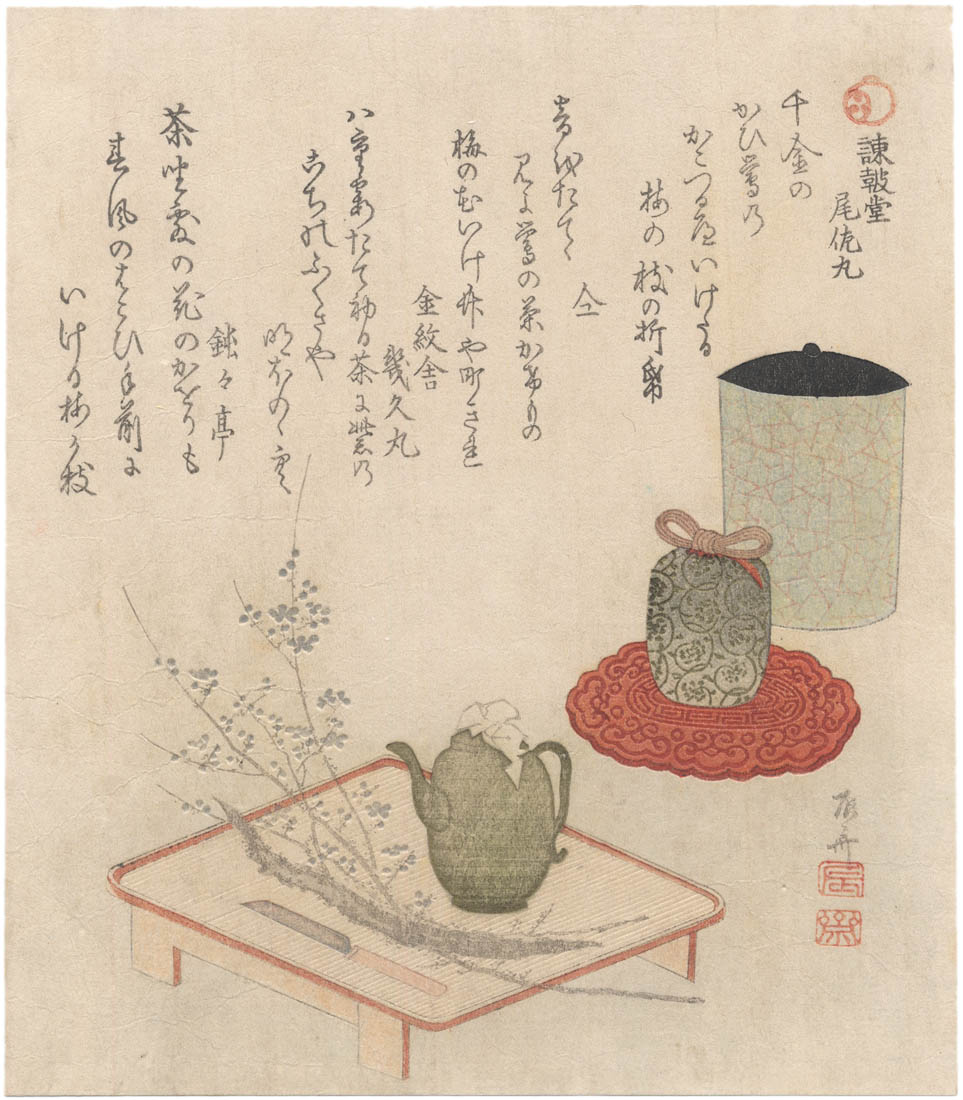
SHINSAI (1764-1820). Tea ceremony objects
RYŪRYŪKYO SHINSAI (1764-1820)
Still-life with a group of objects for the tea ceremony and ikebana:
in the background a water container (mizusashi) with a crackled glaze and a
black lacquer lid. A tea caddy (natsume) in a brocade bag is placed over a
guri-bori red lacquer plate. A bronze ewer, a knife and a plum branch are presented
on a wooden stand.
Woodblock color print with metallic pigments details
Shikishiban surimono, 20,7x18
Signed: Shinsai and artist’s seals Shin Sai
Four poems by Kankodō Osamaru, Kinmonsha Kikumaru and Dondontei
Privately published by the Taiko-gawa group of poets
c. 1820
The Taiko-gawa group of poets, whose symbol was a drum (taiko), was led by
Dondotei Wataru (?-1822). The first syllables of his name suggest the sound of
the drum. Shinsai designed for the Taiko-gawa several fine surimono of still-life
in the shikishiban format.
Illustrated in our catalogue Surimono. Hokusai-Shinsai-Hokkei-Gakutei,
September 2024, no. 19.
Very good impression, color and condition
Item: D 420
Still-life with a group of objects for the tea ceremony and ikebana:
in the background a water container (mizusashi) with a crackled glaze and a
black lacquer lid. A tea caddy (natsume) in a brocade bag is placed over a
guri-bori red lacquer plate. A bronze ewer, a knife and a plum branch are presented
on a wooden stand.
Woodblock color print with metallic pigments details
Shikishiban surimono, 20,7x18
Signed: Shinsai and artist’s seals Shin Sai
Four poems by Kankodō Osamaru, Kinmonsha Kikumaru and Dondontei
Privately published by the Taiko-gawa group of poets
c. 1820
The Taiko-gawa group of poets, whose symbol was a drum (taiko), was led by
Dondotei Wataru (?-1822). The first syllables of his name suggest the sound of
the drum. Shinsai designed for the Taiko-gawa several fine surimono of still-life
in the shikishiban format.
Illustrated in our catalogue Surimono. Hokusai-Shinsai-Hokkei-Gakutei,
September 2024, no. 19.
Very good impression, color and condition
Item: D 420
